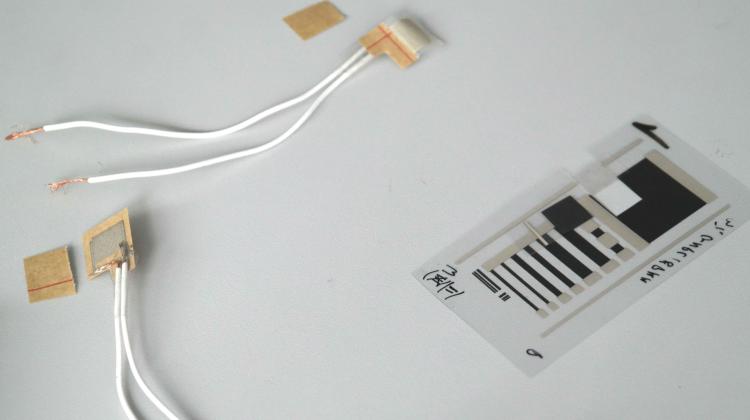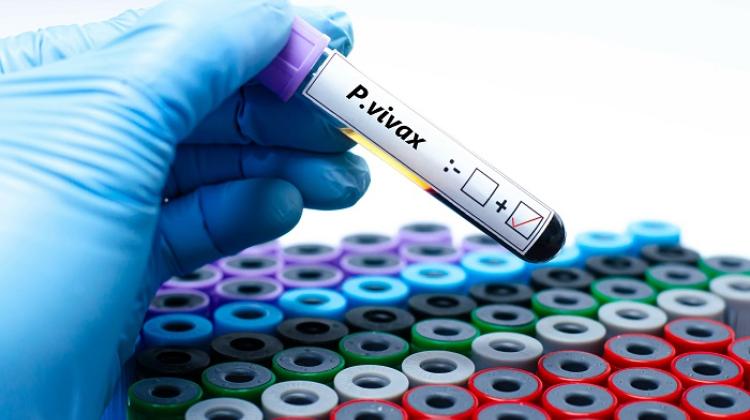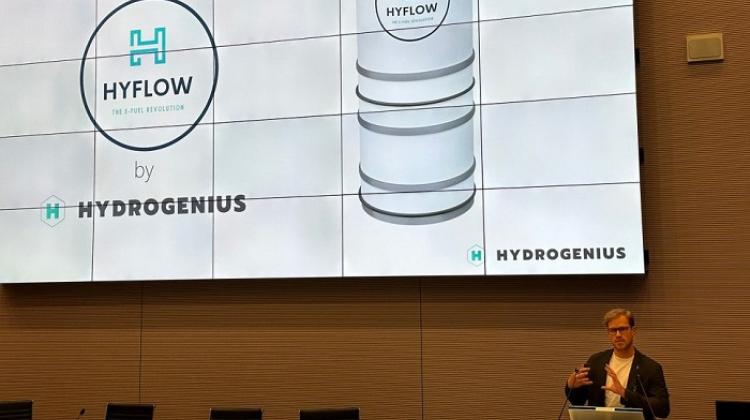Printed biomedical sensors developed at Warsaw University of Technology

Is it possible to check the level of electrolytes, sugar, urea, and even hormones in the blood without that terrible pricking with a needle? It is! The solution are biosensors placed on the skin. They are being developed at Warsaw University of Technology.
Biosensors are used for detecting and measuring signals generated in the body. Researchers at Warsaw University of Technology decided to develop sensors that will not only be small but also enable non-invasive testing. The researchers decided to use the printed electronics technology. The study has been announced in the release sent to PAP representatives by the Warsaw University of Technology press office.
Researchers at Warsaw University of Technology have already developed a prototype of a sensor to measure heart rate. It is printed on paper for temporary tattoos. During the study, it is adhered together with the second layer (made of graphene nanoflakes) to the skin, preferably on the wrist, and it is possible to obtain a signal. This form means that the sensor does not limit or bother the user in any way. The sensor has been developed by Dr. Daniel Janczyk and is being perfected by Andrzej Pepłowski. Both researchers are members of the team of Prof. Małgorzata Jakubowska, who deals with printed electronics at the Faculty of Mechatronics, Warsaw University of Technology.
Pulse measurement is not everything. In the future, sensors could also be used to detect various chemical substances in the human body: electrolytes, sugar, urea or hormones. At the moment devices that could perform such measurements have not yet been tested on the skin. Tests have only been conducted in a lab. Also involved in the development of such sensors (due to their different principles of action) is the team of Prof. Elzbieta Malinowska from the Faculty of Chemistry of Warsaw University of Technology.
Andrzej Pepłowski explains how such small devices can be used to check the level of chemical substances: "What biologically happens in the body is translated to a physical or chemical phenomenon that we can measure. It could be an electrical signal, colour change, distortion ... there are as many methods as there are phenomena".
The sensors developed by the scientist from Warsaw University of Technology are not intended for high-precision laboratory measurements. Their purpose is rather to monitor how the body behaves in different situations (for example, to determine when a person is less/more stressed).
Test using sensors would be fast and non-invasive. Not only pricking with a needle would be avoided, but also sending the sample to the laboratory and then waiting for test results. The measurement of chemical substances takes 1-2 seconds and results are available immediately. "Some diseases and physiological conditions cannot be monitored continuously yet - said Pepłowski. - To carry out the test the patient must spend a day or two in the hospital, in the evening or in the morning a blood sample is taken or the patient is connected to equipment and diagnostic begins. But these are not the normal conditions in which a person functions. Several measurements a day, done with the use of sensors, will help better monitor the changes in the body".
In order to be able to see the test results, researchers need to create an appropriate way to communicate with the sensor. "We would like to use a smartphone - said Andrzej Pepłowski. - The sensor would be placed near a phone with a suitable app, which would display the result".
"We use printed electronics. With a large scale, the cost of one sensor can be 2-3 cents. Even if it is a disposable sensor, it will still be so cheap that using it will be cost-effective for users and manufacturers" - said Pepłowski.
Biomedical sensors have a chance to become the future of diagnostics. "We have feedback from the medical industry that it is a valuable course of action - said Andrzej Pepłowski. - I think that the development of such a solution will be quickly met with high acceptance and interest in the community".
PAP - Science and Scholarship in Poland
lt/ mrt/
tr. RL
Przed dodaniem komentarza prosimy o zapoznanie z Regulaminem forum serwisu Nauka w Polsce.

















